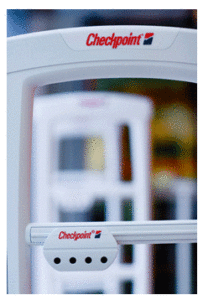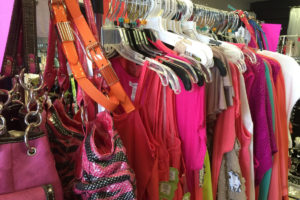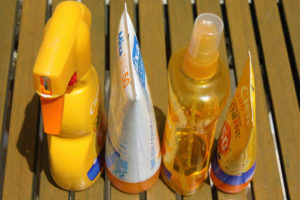 Shoplifters seem to be getting bolder than ever. Much of this is greed. Many people simply want stuff and have no moral compass. Others are emboldened by lax law enforcement or Politicians that pass laws that do little to protect you. Whatever the case be, it has a negative impact on Retailers. We are expected to open our stores, compete, pay employees, pay expenses, taxes…. And make a profit. Shoplifting theft is yet another pressure on us.
Shoplifters seem to be getting bolder than ever. Much of this is greed. Many people simply want stuff and have no moral compass. Others are emboldened by lax law enforcement or Politicians that pass laws that do little to protect you. Whatever the case be, it has a negative impact on Retailers. We are expected to open our stores, compete, pay employees, pay expenses, taxes…. And make a profit. Shoplifting theft is yet another pressure on us.
The key to stopping shoplifting is prevention! You have to keep the losses from occurring. Once the shoplifter has stolen merchandise, even if you catch them, you lose money in labor, unsellable merchandise, sales and the like. This is where a Checkpoint System shines. This is high-quality commercial grade equipment that works 24/7. However, like anything else, you must get as much value out of any equipment you have. A piece of equipment that can pull double and triple duty for the same investment brings a better return on investment. Consider what Loss Prevention Systems offers.
First, when our customers purchase a system from us, they get FREE anti-shoplifting training for the life of the system. This is live training by a Loss Prevention professional as often as you reasonably need it. I actually spend a fraction of that time on the Checkpoint System itself. Most of the time is spent teaching you and your staff how to detect and dissuade shoplifters from even entering your store. You can actually have fun with shoplifters. Drive them crazy and they will get frustrated and simply leave you alone.
Next, there is a whole world of new innovations in the Checkpoint Systems line. People/Customer counting is one. Your system can count customer traffic. You then receive a weekly report that details your traffic by the hour of the day, day or the week. This data can be merged into your sales data to give you a more complete picture. Customers use this data to help with decisions on staffing levels, open/close times and more. The system will also report on the Checkpoint System alarms. How and when they occur. This further feeds into your decisions about staffing levels. You may say that my cash register tells me traffic. Not so, as not every customer that comes into your store makes a purchase. Why is that? Possibly because you do not have enough staff on at the times when you really need it.
How about remote control of your Checkpoint System from your mobile device while inside your store? This feature notifies you of alarms, maintenance issues, and real-time stats. You can be in your office, stock room or anywhere in your store and the system will notify you of an alarm. Immediately. This also gives you control of the system itself. Checkpoints systems are already ECO-friendly in their power consumption. But you can set up a schedule that tells your system to power down during the hours you are closed. Over a year that money adds up.
Marketing? Our systems have AD Panel capability either built-in or as an add-on. The antennas are there at the front door anyway, why not have them greet your customers with signage that you can change out as often as you wish. Promote an item, a sale, a special or simply say “welcome”. Print whatever you want and slide it into the clear acrylic frame. Now you get double duty without taking up any more floor space.
How about control of items you do not want to leave the store under any circumstances? Key rings, customer hand baskets, notebooks, documents, tools, equipment or supplies. Simply put a tag or label on them.
Contact Loss Prevention Systems today and we will help set you on the path to higher profits!
 It is hard to believe but summer is almost here! What are you doing about it? As crazy as the question may sound there is a reason I ask. What are you doing that will be different than what you did last summer? Do you know what it was you did to inspire additional sales last year? Maybe you didn’t do anything at all differently. Maybe you added a new piece of summer merchandise to your merchandising strategy. How did that item do in sales? Was it a blockbuster for you? On a similar note, how was the customer foot traffic in your store? Did you see an increase in the number of patrons last summer over the rest of the year? If you aren’t asking the questions then you are probably flying by the seat of your pants and that is not going to be beneficial to you at all. Sales tracking and Customer Counting can assist you in exponentially growing your sales.
It is hard to believe but summer is almost here! What are you doing about it? As crazy as the question may sound there is a reason I ask. What are you doing that will be different than what you did last summer? Do you know what it was you did to inspire additional sales last year? Maybe you didn’t do anything at all differently. Maybe you added a new piece of summer merchandise to your merchandising strategy. How did that item do in sales? Was it a blockbuster for you? On a similar note, how was the customer foot traffic in your store? Did you see an increase in the number of patrons last summer over the rest of the year? If you aren’t asking the questions then you are probably flying by the seat of your pants and that is not going to be beneficial to you at all. Sales tracking and Customer Counting can assist you in exponentially growing your sales. Some people in retail look forward to it and some dread it. What am I talking about? Inventory! From the planning stages and meetings with the inventory counting team to the actual inventory day it can all be a lot to accomplish even for the best of planners. But what happens when you get through the actual counting phase? What comes next? You wait for the results. You may get preliminary results immediately but for larger stores booked inventory may take several weeks and they have teams to analyze the results. As a small retailer you may have to analyze the reports yourself but do you really understand what you are looking for? Are your results accurate? Stores have to keep track of what they have on hand and owners need to know where shortage has taken place and how it has happened.
Some people in retail look forward to it and some dread it. What am I talking about? Inventory! From the planning stages and meetings with the inventory counting team to the actual inventory day it can all be a lot to accomplish even for the best of planners. But what happens when you get through the actual counting phase? What comes next? You wait for the results. You may get preliminary results immediately but for larger stores booked inventory may take several weeks and they have teams to analyze the results. As a small retailer you may have to analyze the reports yourself but do you really understand what you are looking for? Are your results accurate? Stores have to keep track of what they have on hand and owners need to know where shortage has taken place and how it has happened. The IT world has a phrase “garbage in, garbage out”. The same concept applies to hiring new employees. If you do not put effort into selecting a new employee, then chances are you will be disappointed down the road.
The IT world has a phrase “garbage in, garbage out”. The same concept applies to hiring new employees. If you do not put effort into selecting a new employee, then chances are you will be disappointed down the road. March is known for coming in like a lion and going out like a lamb. April showers bring May flowers but what in the world does May bring? May ushers in the summer sales season! Spring is wrapping up and now is the time to be getting your store ready for all of the shoppers looking for the items that will make the long, warm days of June, July and August a memorable time. The big stores are rolling out grills, picnic wares and yard games.
March is known for coming in like a lion and going out like a lamb. April showers bring May flowers but what in the world does May bring? May ushers in the summer sales season! Spring is wrapping up and now is the time to be getting your store ready for all of the shoppers looking for the items that will make the long, warm days of June, July and August a memorable time. The big stores are rolling out grills, picnic wares and yard games. Holiday sales events and promotions are intended to boost retail sales. The obvious big event is the Christmas holiday season which seems to begin in October for many retailers. The event carries into January when merchandise goes clearance as retailers prepare for the next holiday event and the beginning of the Spring sales lines.
Holiday sales events and promotions are intended to boost retail sales. The obvious big event is the Christmas holiday season which seems to begin in October for many retailers. The event carries into January when merchandise goes clearance as retailers prepare for the next holiday event and the beginning of the Spring sales lines. The scary shoplifting cases we hear and see on TV, or on newspapers in the United States, are becoming too commonplace to rendered us shocked.
The scary shoplifting cases we hear and see on TV, or on newspapers in the United States, are becoming too commonplace to rendered us shocked.  Recently, I conducted an employee theft investigation for a client. I want to share some of the findings from that investigation in the hopes that you can use it to review your own potential for losses.
Recently, I conducted an employee theft investigation for a client. I want to share some of the findings from that investigation in the hopes that you can use it to review your own potential for losses. 
